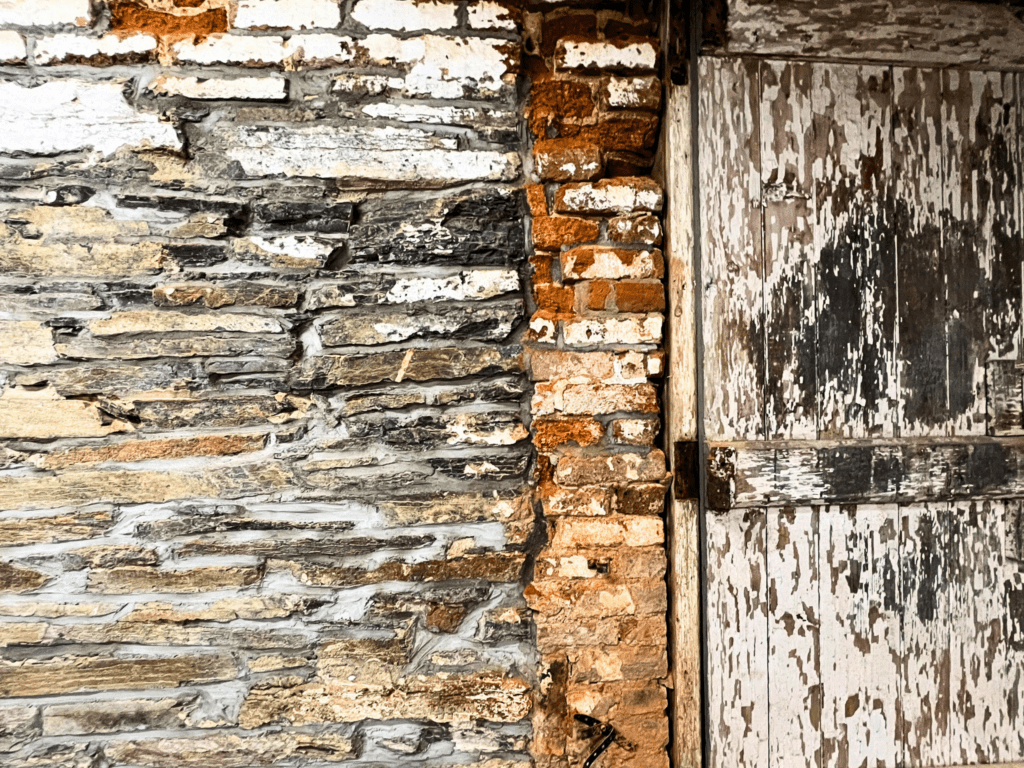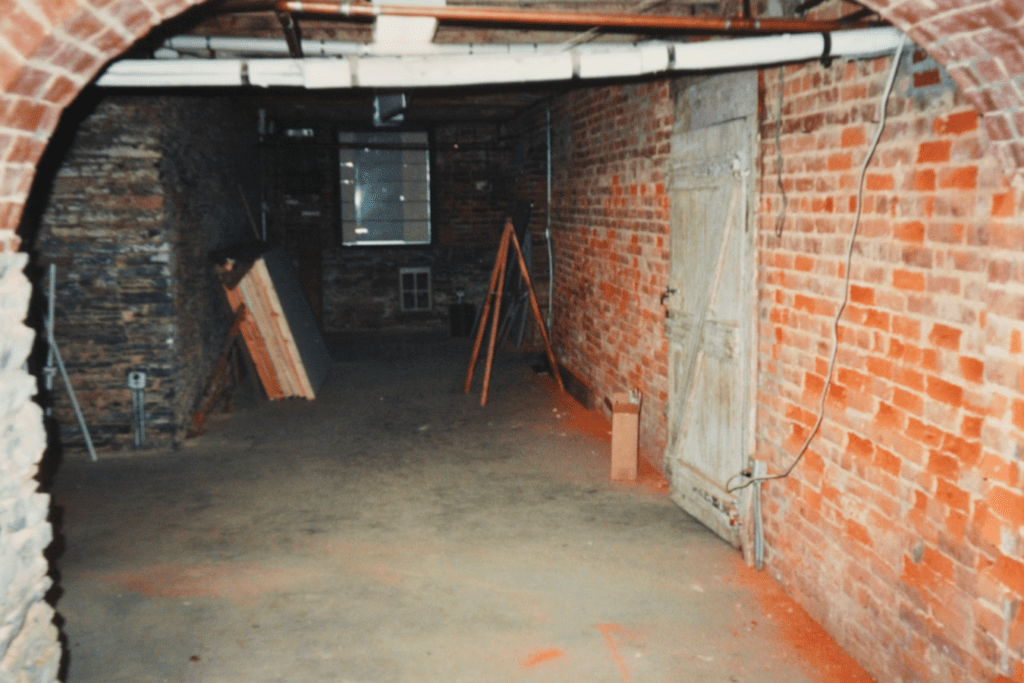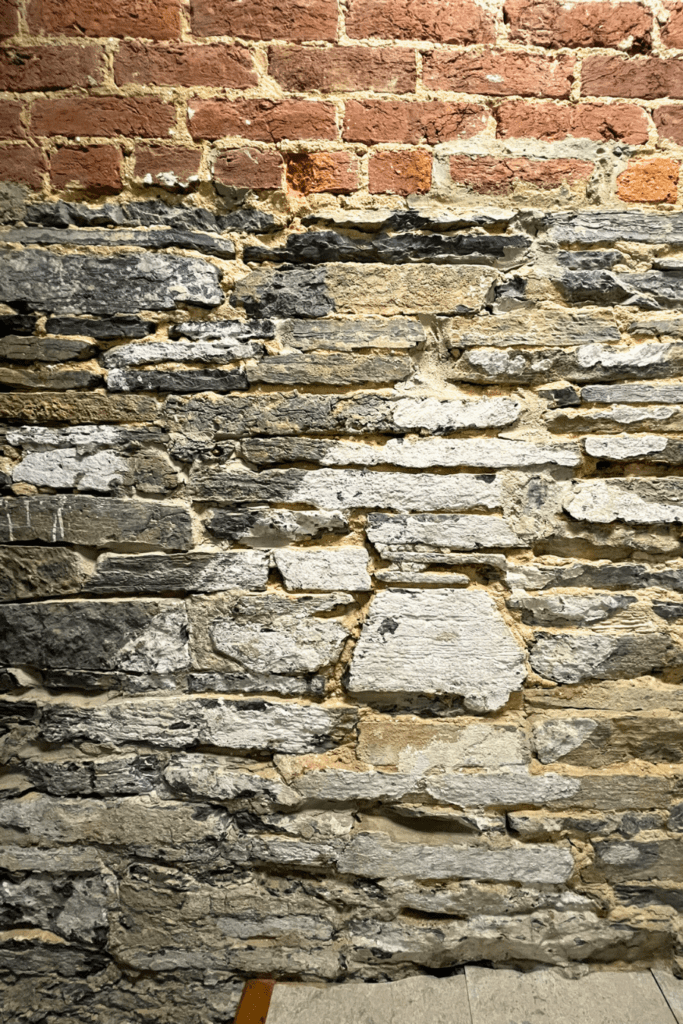Heritage Frederick’s Research Center is temporarily closing this month to allow masons from Gruber Latimer Restoration to remove loose mortar and repoint the stone and brick foundation walls of our historic headquarters at 24 East Church Street. This crucial preservation work is possible thanks to a grant from the Delaplaine Foundation.

The foundation walls supporting the museum are two hundred years old. Architectural remains offer clues to the historical uses of the basement space. Portions of whitewash remaining on the walls reveal the outline of the back stairway that once descended to the basement. This stairway provided direct access to all four levels of the building and was likely used by enslaved servants as they completed daily domestic jobs in the household. Houses built in the same time period as 24 East Church Street typically had cellars or basements for storing food, kitchens, and spaces for storing fuel sources for heating the structure. Surviving documents and archaeological evidence indicate that coal was in use on the property as early as 1854, and part of the basement likely held a bunker for coal storage.


From 1882 until 1956 when the building served as Loats Female Orphan Home, the basement continued to house equipment for heating while the long room in the center (beneath the main hallway) was used by the girls for indoor exercise and roller skating. After the closure of the orphan home and the transformation of the house into the Historical Society of Frederick County, the basement continued to be used for children’s activities where antique toys were exhibited.
By the 1990s, the Historical Society’s library and archives, housed on the second floor and in the attic, were overflowing with manuscripts, photographs, maps, and books. The weight of these collections became a problem, placing too much stress on the wood floors up of the upper stories of the building. The Society looked to the large basement space as an opportunity for alleviating this problem while simultaneously expanding the capacity of the archives and research collections. The project was spearheaded by longtime volunteer and Historical Society President Bill Willmann. Work spaces, a library, a reading room for researchers, and collections storage facilities were designed into the basement space. At that time, extensive repairs were made to the foundation walls, including the replacement of over 1,200 bricks. The organization also installed new HVAC units to maintain consistent temperature and humidity levels for the preservation of archival resources. On September 28, 1993, the renovated basement and new Frederick County Research Center opened its doors to the public.

Thirty years later, Heritage Frederick remains committed to the preservation of the building our organization has called home for the past sixty-five years. Once masonry restoration is completed, we plan to reopen the research center in mid-April.
March 6, 2024, By Jody Brumage, Heritage Frederick Archivist
